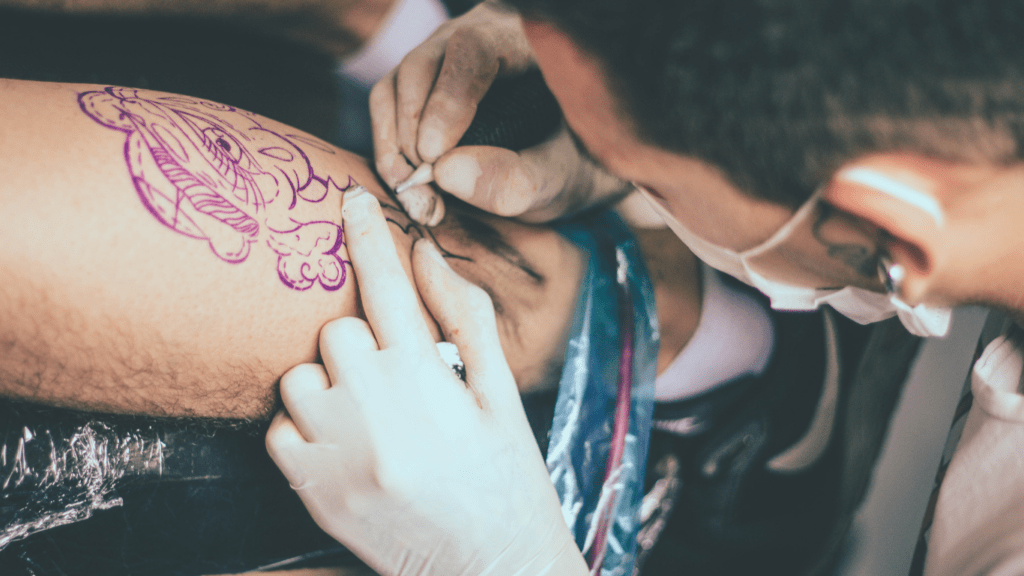Understanding Art Tattoos
Art tattoos offer a unique form of self-expression and are deeply rooted in history and diverse styles.
The History of Art Tattoos
Art tattoos have a long and rich history. Ancient cultures, like the Egyptians and Polynesians, used tattoos for various purposes, including religious rituals and social status symbols. The word “tattoo” itself comes from the Polynesian word “tatau.” Tattooing spread to the Western world in the 18th century, popularized by sailors who encountered the practice on their voyages.
By the 20th century, tattoos became mainstream, evolving from simple designs to intricate works of art.
Different Styles of Art Tattoos
Styles of art tattoos vary widely, each with unique characteristics:
- Traditional (Old School): Bold lines, bright colors, and iconic imagery like roses and anchors.
- Realism: Detailed and lifelike tattoos, often resembling photographs.
- Watercolor: Soft, brushstroke-like colors without black outlines, mimicking watercolor paintings.
- Tribal: Black lines and patterns, often inspired by Polynesian or Maori designs.
- Japanese (Irezumi): Rich in symbolism, featuring imagery like koi fish and cherry blossoms.
- Neo-Traditional: Combines traditional elements with more depth and modern influences.
- Dotwork: Uses tiny dots to create images and shading, often forming geometric patterns.
Each style offers a different way to express personal stories and values.
Getting Your First Art Tattoo

Getting an art tattoo can be an exhilarating experience. Knowing the steps can make the process smoother and more enjoyable.
Choosing the Right Tattoo Artist
Selecting a skilled artist is crucial for getting an art tattoo. Begin by researching local tattoo parlors. Check online reviews and portfolios to gauge an artist’s style compatibility with your vision.
Visit studios to assess cleanliness and professionalism. Ask about the artist’s experience with specific styles, especially if it’s a specialized design like Japanese or Dotwork. Ensure the artist listens to your ideas and provides constructive feedback.
Preparing for a Tattoo Session
Proper preparation can significantly impact your tattoo experience. Hydrate well in the days leading up to your appointment. Get a good night’s sleep the night before.
Eat a balanced meal before heading to the studio, as this helps maintain your energy levels. Wear comfortable clothing that allows easy access to the tattoo area. Avoid alcohol and blood-thinning medications for at least 24 hours before the session. Lastly, bring identification, as many studios require it for age verification.
Post-Tattoo Care
Proper care after getting an art tattoo ensures the design heals well and retains its vibrant colors. Immediate aftercare and long-term maintenance play crucial roles in this process.
Immediate Aftercare Tips
- Cover the tattoo with a sterile bandage or wrap for the first few hours. Remove it carefully to avoid damaging the fresh ink.
- Wash the tattoo gently with lukewarm water and mild, fragrance-free soap. Pat it dry with a clean paper towel.
- Apply a thin layer of unscented moisturizing ointment like Aquaphor. Avoid petroleum-based products, which can clog pores and hinder healing.
- Repeat the cleaning and moisturizing process 2-3 times a day. Keep the tattoo dry and avoid submerging it in water to prevent infections.
- Wear loose clothing to minimize friction against the tattooed area. Tight clothes can irritate the skin and slow the healing process.
Long-Term Tattoo Maintenance
- Protect the tattoo from direct sunlight. Apply broad-spectrum sunscreen with at least SPF 30 on the tattooed skin when outdoors.
- Moisturize the tattoo regularly with an unscented lotion. Keeping the skin hydrated preserves the tattoo’s vibrancy.
- Avoid excessive weight gain or loss. Significant skin stretching can distort the tattoo design.
- Schedule touch-up appointments with the tattoo artist as needed. Regular touch-ups maintain the tattoo’s original appearance.
- Stay consistent with these care practices to ensure the art tattoo remains bright and well-defined.
Common Questions About Art Tattoos
Many beginners have questions about art tattoos, especially regarding safety and meanings behind common designs. Below are key points to consider:
Safety Concerns with Tattoos
Tattoo safety is crucial. Choosing a reputable tattoo artist ensures cleanliness and professionalism. Artists should use sterilized needles and fresh ink for each client.
Understand the risks of allergic reactions or infections, and follow aftercare instructions meticulously. Check the studio’s licensing and artist reviews to confirm their credibility.
The Meaning Behind Common Tattoo Designs
Art tattoos often carry significant meanings. Roses symbolize love and beauty. Skull tattoos can represent mortality or strength. Animal tattoos, like eagles or lions, often stand for courage or freedom.
Research the symbolism of your chosen design to ensure it aligns with your personal values. A knowledgeable artist can provide insights and suggestions based on common interpretations.


